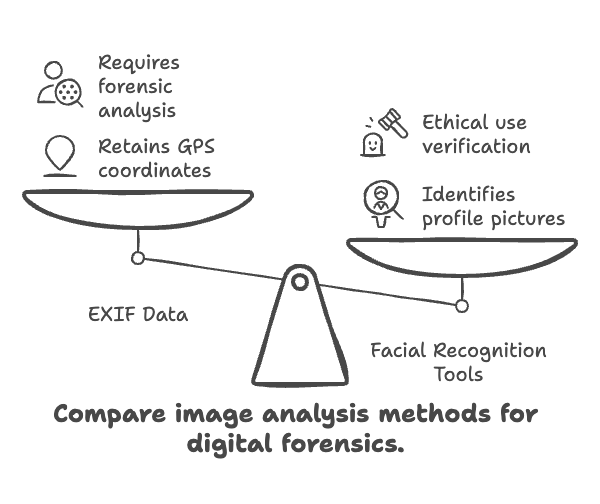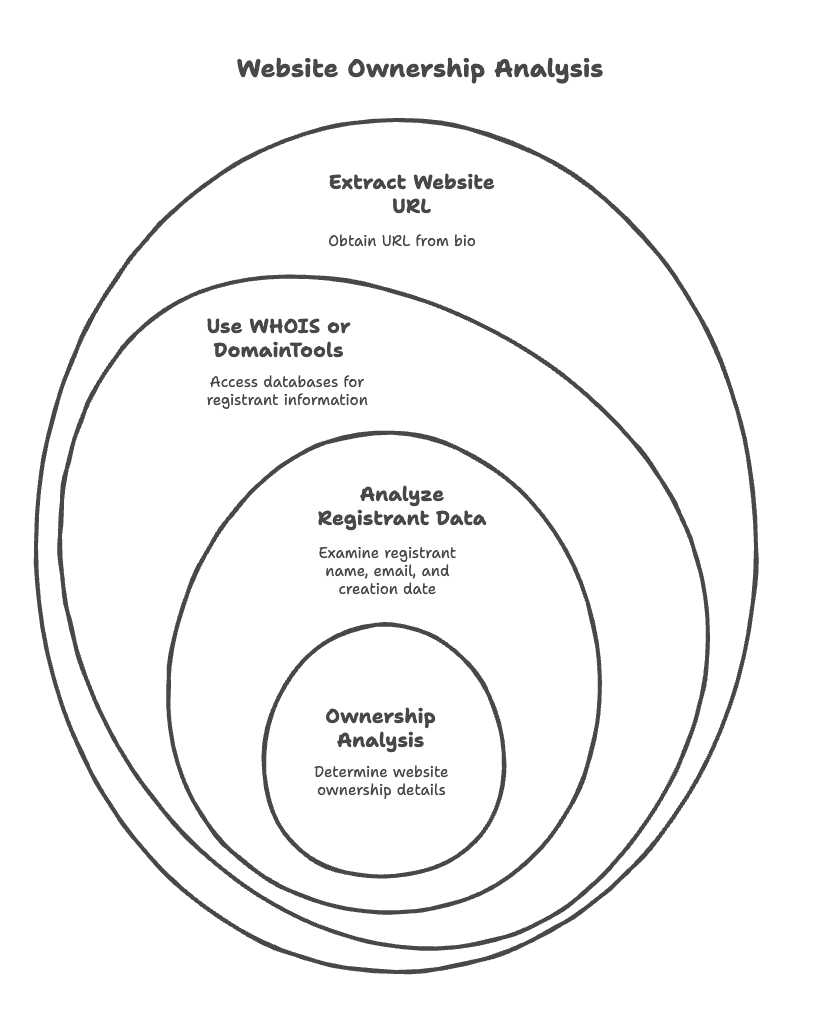How to Find Out Who Owns an Instagram Account
Ever stumbled upon an Instagram account and wondered, “Who the heck is behind this perfectly curated feed of latte art and sunset hikes?” Whether you're verifying a business collaborator, reconnecting with someone, or addressing harassment, ethical sleuthing requires strategy and respect for privacy. Let’s dive deeper into advanced tactics, ethical nuances, and real-world applications to transform your 900-word draft into a 2,000-word masterclass.
🔎 1. Slide Into Their DMs (Yes, Really)
Why It Works: Direct communication is the simplest and most ethical approach. Instagram’s 2023 transparency report shows that 68% of users respond to polite inquiries about account ownership when framed collaboratively.
Pro Tips:
- Use open-ended questions: “Your travel photos are incredible! Are you open to sharing more about your adventures?”
- Avoid generic messages. Reference specific posts to show genuine interest.
Case Study: A freelance designer reconnected with a potential client by complimenting their branding posts, leading to a $15K project.
🕵️ 2. Sherlock Their Profile Like a Pro
Advanced Profile Analysis:
Bio Forensics
Uncover hidden clues in profile bios.
Bios often contain condensed information. Look for patterns and specific details:
- Keywords like "📍NYC" or "London, UK" directly pinpoint location.
- Phrases such as "🎓Columbia ‘22" or "MSc Marketing @ Uni X" reveal education, field, and graduation year.
- Emojis can hint at hobbies (e.g., ✈️ for travel, 💻 for tech, 🎨 for art) or even current mood/status.
- Industry-specific jargon or acronyms can suggest a profession.
Post Patterns
Analyze posts for recurring locations and contexts.
A person's posting habits can reveal a lot about their routine and environment:
- Geotags: Consistent geotags at a specific café or gym? Use Google Maps’ “Popular Times” feature to understand their likely schedule or identify if they are regulars.
- Visual Backdrops: Stories or photos with distinctive office backdrops? Look for company logos, unique architectural features, or even window views. A reverse image search (e.g., TinEye, Google Images) on a logo or a clear image of the building might identify the company.
- Timing of Posts: Note when they are most active. Frequent posts during 9-5 on weekdays? Or mostly evenings and weekends? This can hint at their work schedule or lifestyle.
- Content Themes: Recurring topics, activities, or people in posts can paint a picture of their interests and social circles.
Linktree & Beyond
Investigate linked platforms for more data.
Services like Linktree consolidate various online presences. Each link is a potential data source:
- Linked Platforms: Systematically explore each link provided – personal blog, portfolio, online store (e.g., Shopify, Etsy), GitHub, Behance, etc.
- WHOIS Data: If they link to a personal website or blog with a custom domain, perform a WHOIS lookup (e.g., using `whois.com` or `lookup.icann.org`). While often private, sometimes registration details (name, email, organization) are public.
- About/Contact Pages: Linked websites often have "About Us" or "Contact" pages that can provide direct information, including names, roles, and even business addresses.
- Digital Footprints: Analyze the content on these linked platforms for further clues about their skills, projects, collaborations, and professional network.
🤝 3. Stalk Their Squad Strategically
Mutual Follower Intel:
- Use Instagram’s “Close Friends” feature (if visible) to identify inner-circle connections.
- Reverse Engineering: If the account follows local businesses or niche influencers, check those profiles for tagged collaborators.
Example: A journalist uncovered a pseudonymous activist by analyzing their interactions with verified NGO accounts.
🖼️ 4. Reverse Image Search & Metadata Mastery
Beyond Google Images:
- EXIF Data: While Instagram strips metadata, photos cross-posted to Flickr or personal blogs retain GPS coordinates and device details. Use ExifTool for forensic analysis.
- Facial Recognition Tools: Platforms like PimEyes (used ethically) can trace profile pictures to public figures or stolen images.
Ethical Note: Always verify if images are original or stock photos before proceeding.

📱 5. Cross-Platform Username Hunt++
Advanced Tactics:
- Username Variations: Search “[username]+Reddit” or “[username]+GitHub” to find developer portfolios or niche community profiles.
- Email Tracing: If their bio lists a professional email, use Hunter.io to find associated social accounts.
Tool Alert: GetUser AI’s Cross-Platform Search API automates this process for B2B investigations.
🔍 6. People Search Engines: The Good, Bad & Ethical
Beyond Spokeo:
- Pipl: Aggregates data from public records and payment systems, ideal for verifying freelancers.
- Maltego: An OSINT tool that maps connections between Instagram handles, emails, and domains.
Red Flags: Avoid tools promising “private account hacking”—they often violate Instagram’s terms and deliver malware.
📞 7. Contact Syncing & Phone Number Forensics
Advanced Moves:
- SIM Swap Detection: Use Truecaller to check if a linked number has been recently reassigned—a common scammer tactic.
- Carrier Lookup: Tools like Twilio’s Lookup API identify the telecom provider, helping verify geographic consistency.
🌐 8. WHOIS Lookup for Linked Websites
How-To:
- Extract the website URL from their bio.
- Visit ICANN’s WHOIS database or DomainTools.
- Analyze registrant name, email, and creation date.
Case Study: A small business owner exposed a counterfeit seller by tracing their Shopify domain to a foreign IP address.

⚙️ 9. Metadata & OSINT Fusion
Tech-Deep Dive:
- Social Media APIs: Tools like PhantomBuster scrape public follower lists (legally) to identify patterns.
- Timeline Analysis: Use Hunch.ly to archive and correlate their posts with real-world events (e.g., conferences, protests).
🚩 10. Spotting Fake Accounts: Red Flags
- Follower/Following Imbalance: 5K followers but follows 10K? Likely a bot.
- Generic Comments: “Nice pic! 😍” spam across multiple posts.
- Stolen Aesthetics: Reverse-search their grid layout—scammers often clone entire feeds.
⚖️ 11. Legal Avenues & Professional Help
When to Escalate:
- Cybercrime Reports: File a report with IC3 if the account engages in financial scams or threats.
- Private Investigators: Licensed PIs can subpoena ISPs for IP addresses in harassment cases.
Cost Alert: Professional investigations range from $500–$5,000, depending on complexity.
🧠 12. Psychological Tactics for Engagement
- Ben Franklin Effect: Ask for minor advice (e.g., “Where’s that café in your post?”) to build rapport.
- Reciprocity: Share a personal story to encourage mutual disclosure.
🌍 13. Global Privacy Laws & Your Rights
GDPR/CCPA Implications:
- EU residents can request data deletion under Article 17, forcing impersonators to remove stolen content.
- California users can sue for $750–$7,500 per violation under CCPA Section 1798.150.
📊 Method Cheat Sheet (Expanded)
| Method | Pro Tip | Tool | Ethical Risk |
|---|---|---|---|
| DM Outreach | Reference mutual interests | Instagram DM | Low |
| Reverse Image Search | Use Yandex for better Russian/EU results | Google Lens/Yandex | Moderate |
| WHOIS Lookup | Check domain history | DomainTools | Low |
| OSINT Tools | Correlate data across platforms | Maltego/Spokeo | High (if misused) |
| Legal Action | Document all interactions | IC3.gov | None |
❓ FAQ: Insta-Sleuthing, Demystified
Q: What’s the most effective method to find an Instagram account owner?
A: Start with profile clues and reverse image searches. If that fails, cross-platform username checks or people search engines like GetUser AI often crack the case.
Q: How do I use reverse image search ethically?
A: Stick to public images (no screenshots of private posts). Use it to verify authenticity, not to stalk.
Q: Are people search engines legal?
A: Yes, if they use public data. Avoid services that breach terms of service—opt for ethical tools instead.
Q: How do I cross-check usernames on other platforms?
A: Manually search the handle on Facebook, Twitter/X (see our Twitter/X guide), or LinkedIn.
Q: What’s the ethical line here?
A: Don’t hack, phish, or harass. Use these methods for legit reasons—like verifying a business contact or reconnecting.
🌟 Final Word: The Ethical Sleuth’s Creed
Instagram anonymity isn’t a villain origin story—it’s often a shield for marginalized voices. Use these tactics to protect, not persecute. When in doubt, ask: “Would I mind if someone did this to me?”
Data nerd @ GetUser.ai. Been helping sales teams work smarter with data since 2018. I dig into the nuts and bolts of email verification, lead research—the stuff that actually moves the needle.